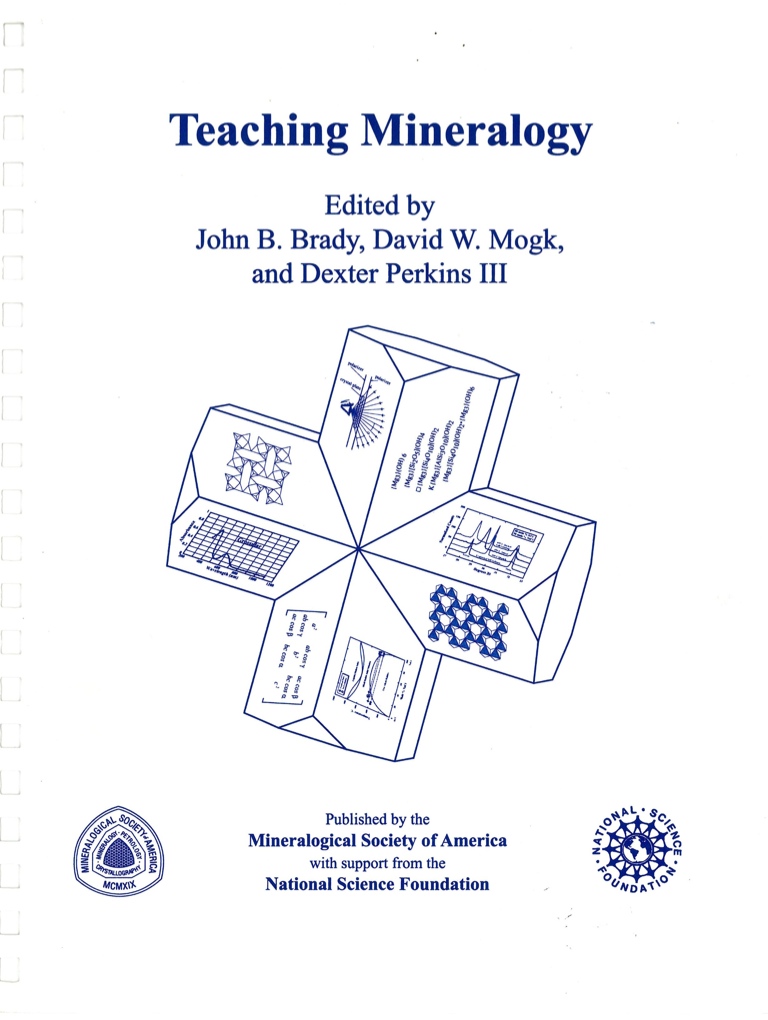
Teaching Mineralogy
John B. Brady, David W. Mogk and Dexter Perkins III (2011) i-viii + 406 pages. ISBN 978-0-939950-44-7.
This book is an outgrowth of a workshop on teaching mineralogy held at Smith College in June 1996 and sponsored by a grant from the Division of Undergraduate Education, National Science Foundation (DUE-9554635). Seventy participants, from diverse institutional settings and from all academic ranks, met to explore common interests in improving instruction in mineralogy. At the workshop, participants took part as both instructors and as students. They had the opportunity to explore a variety of new instructional methods and materials and also to observe their colleagues as instructors. All were encouraged to test these activities in their own classrooms, to evaluate their effectiveness, to suggest changes to the authors, and to develop new and complementary exercises. The sourcebook before you is the product of this group effort.
Within this volume you will find numerous exercises that can be applied in the teaching of mineralogy and related courses. There are hands-on, experimental, theoretical, and analytical exercises. All have been written with the hope of optimizing student learning. At the workshop there was little interest in developing a "prescriptive" approach to mineralogy by making recommendations on a specific content that might be universally applied in mineralogy courses and curricula. We recognize that every student population will have different needs, every faculty vi member will have her or his own areas expertise, every department will have its own curricular needs, every institution will have its own resources, and every geographic setting will provide unique educational opportunities. The exercises in this volume provide examples of innovative ways that mineralogy can be taught using a variety of materials and teaching techniques. We encourage you to use these activities in whatever ways will best serve your students. You may freely photocopy the exercises for class use, adopt these materials or adapt them to meet the special needs of your own course, and use these activities as models to help you develop your own new exercises.
Download individual chapters of Teaching Mineralogy, no cost
